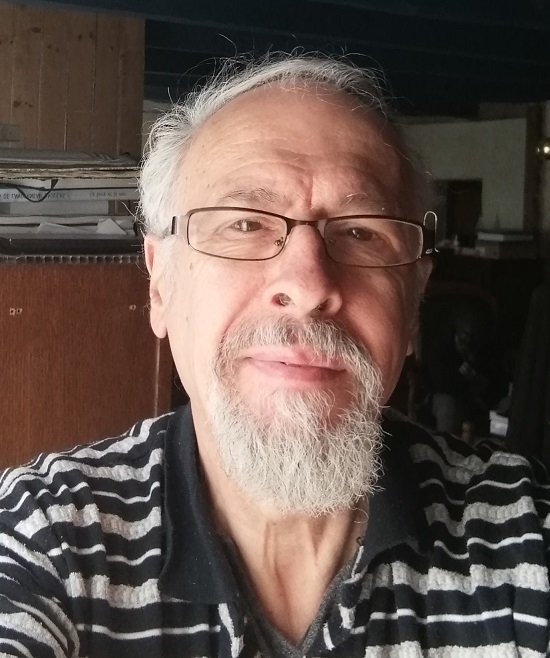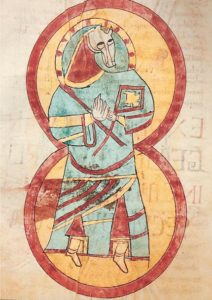Un autre marché du luxe : le gout des élites méditerranéennes aux XIVe et XVe siècles
Programme de la Journée d’études
Un autre marché du luxe : le gout des élites méditerranéennes aux XIVe et XVe siècles
Toulouse, 24 et 25 novembre 2010
Mercredi 24 novembre
Université de Toulouse-Le Mirail, Maison de la Recherche, salle D30
9h : accueil des participants
9h30 : Sophie Cassagnes-Brouquet, UniversitéToulouse II leMirail, Introduction
Un modèle, la cour pontificale d’Avignon
10h : Roberte Lentsch, Conservateur en chef du patrimoine, Responsable du Patrimoine historique, Ville d’Avignon, Le cérémonial à la cour pontificale d’Avignon : la « chapelle » du pape, un costume religieux.
Discussion et pause
11h : Maria-Alessandra Bilotta, Université d’Avignon, Pour une histoire de la circulation des manuscrits enluminés et de leurs possesseurs entre la Provence, le Languedoc, la Catalogne et l’Italie au XIVe siècle : quelques manuscrits récemment retrouvés.
11h30 : Émilie Nadal, L’atelier catalan du Pontifical de Narbonne
Discussion
Repas
La consommation des élites : quelques cas de figure
14h 30 : Dominique Vingtain, Conservateur du Musée du Petit Palais, Avignon, Le décor textile du palais des papes au XIVe siècle.
15h : Véronique Lamazou-Duplan, Université de Pau et des Pays de l’Adour, Les objets précieux dans les intérieurs toulousains des XIVe et XVe siècles : les ambiguïtés de l’orfèvrerie.
15h30 : Bernard Doumerc, UniversitéToulouse II leMirail, Le corail, production et circulation d’un produit de luxe.
Discussion et pause
Objets précieux et modes iconographiques
16h30 : Michelle Fournié, Université Toulouse II leMirail, Le purgatoire, circulation d’un thème iconographique entre Languedoc et Catalogne.
Jeudi 25 novembre 2010
Bibliothèque dʼétudes méridionales, 56 rue du Taur, Toulouse
Objets précieux et modes iconographiques
9h30 : Virginie Czerniack, Université Toulouse II le Mirail, Pigments rares, matériaux précieux et procédés technique élaborés : l’expression d’un raffinement certain dans la peinture murale méridionale des XIVe et XVe siècles.
10h : Charlotte Riou, Conservateur chargé des sculptures, Musée des Augustins,Toulouse, Les Vierges à l’Enfant aux drapés en tablier : un type sculpté plébiscité par les élites languedociennes.
Discussion, pause
11h30 : Juan-Vicente GarciaMarsilla, Université de Valence, Conclusions et présentation des journées de Valence Un autre marché du luxe : le goût des élites méditerranéennes d’Avignon à Valence aux XIVe et XVe siècles
Source : Maria Alessandra Bilotta
« Des phrases courtes, mes chéris ! » Journée d’étude sur le manuscrit enluminé offerte à Patricia Stirnemann (IRHT)
Chargée de recherche à l’Institut de recherche et d’histoire des textes (CNRS), l’historienne de l’art Patricia Stirnemann est spécialiste des manuscrits enluminés du Moyen Âge. Toutes ses recherches visent à rendre justice de l’objet matériel d’étude, une démarche couronnée de découvertes importantes : citons ses travaux sur les psautiers royaux des XIIe et XIIIe siècles, les Très Riches Heures de Jean de Berry, l’histoire des bibliothèques ou encore sur le décor secondaire, primordial pour dater et localiser un manuscrit.
Mondialement reconnue, sollicitée de tous pour son expertise, Patricia Stirnemann a exercé de facto la fonction de directrice de recherche pour d’innombrables chercheurs, confirmés et débutants. Tous apprécient les discussions stimulantes avec elle, son exigence scientifique, parfois sévère, toujours constructive et encourageante. Excellente enseignante, elle ravit son auditoire par son humour et son approche concrète, tandis que son franc-parler et son pragmatisme anglo-saxon ont fait avancer plus d’une réunion et plus d’un « projet ».
 Au cours de sa carrière, elle a noué des amitiés et mené des collaborations avec des médiévistes du monde entier, en commençant par les Etats-Unis, son pays d’origine. Pars pro toto, onze jeunes collègues lui offriront à l’occasion de ses soixante-cinq printemps un hommage amical : un bouquet de communications sur le manuscrit enluminé et liturgique dont les époques – les derniers siècles du Moyen Âge – et les sujets seront en résonance avec quelques-uns de ses chantiers récents. Quant au titre de la journée, il rappelle en guise de clin d’œil son aversion – ô combien justifiée – pour le fléau du « trop de mots » !
Au cours de sa carrière, elle a noué des amitiés et mené des collaborations avec des médiévistes du monde entier, en commençant par les Etats-Unis, son pays d’origine. Pars pro toto, onze jeunes collègues lui offriront à l’occasion de ses soixante-cinq printemps un hommage amical : un bouquet de communications sur le manuscrit enluminé et liturgique dont les époques – les derniers siècles du Moyen Âge – et les sujets seront en résonance avec quelques-uns de ses chantiers récents. Quant au titre de la journée, il rappelle en guise de clin d’œil son aversion – ô combien justifiée – pour le fléau du « trop de mots » !
Programme
Claudia Rabel et Michel Pastoureau
Accueil et présentation de la journée
Dominique Vanwijnsberghe (Institut royal du patrimoine artistique, Bruxelles)
« ‘Ah, les lettres de Marc !’ Caussin et le missel de la cathédrale de Cambrai »
Anne Ritz-Guilbert (Ecole du Louvre et EPHE, Paris)
« Un facsimilé réalisé pour François-Roger de Gaignières au XVIIe siècle : les Statuts de l’Ordre du Saint-Esprit au droit désir »
Isabelle Delaunay (Docteure en histoire de l’art, Paris)
« Quelques dates importantes dans la carrière du Maître d’Anne de Bretagne »
10h45-11h15 – Pause
Pascal Schandel (Bibliothèque nationale de France, Paris)
« Le duc, le capitaine et le commandant. Iconographie des Ordonnances militaires de Charles le Téméraire »
Francesca Manzari (Università La Sapienza, Rome)
« Animals and funny faces in the filigree decorations from the Avignon workshop of Bernard de Toulouse »
Marie Jacob (Université de Paris Ouest – Nanterre – La Défense)
« Un recueil de machines de guerre romaines au ‘Lyon d’or’ de Châtellerault »
12h30-14h00 – Pause méridienne
14h-16h30
Mara Hofmann (Docteure en histoire de l’art, Londres)
« Catching words »
Pier Luigi Mulas (Université de Clermont-Ferrand II)
« Mira brevitate libellus. Camillo Spannocchi et un manuscrit enluminé microscopique à Chantilly »
Ilona Hans-Collas (Bibliothèque nationale de France, Paris et Institut royal du patrimoine artistique, Bruxelles)
« Saint Michel et le pèlerinage des enfants »
Jean-Baptiste Lebigue (Institut de recherche et d’histoire des textes, Orléans)
« Rits et couleurs. Acronymie et chromonomie des calendriers liturgiques »
Catherine Yvard (Courtauld Institute, Londres)
« Un quart d’heure avec le Maitre de Jean Charpentier »
Entrée libre, inscription demandée auprès de : Claudia.Rabel[at]cnrs-orleans.fr.
23 octobre 2010
Institut national d’histoire de l’art
Salle Vasari / 2, rue Vivienne – 75002 Paris
[ Site IRHT ]
Illustration : Enlèvement d’Europe (Paris, BnF, Fr. 599, f. 11v)
Understanding the Medieval Book : A Seminar with Dr. Christopher De Hamel (The University of South Carolina)
The University of South Carolina will be sponsoring a free medieval manuscripts seminar with Dr. Christopher de Hamel on 4-5 April 2011. The event will take place at the university’s brand new Hollings Library and will use its collection of 120 manuscripts and fragments. The event includes two evening lectures.
Details and application materials can be found at this URL . Application deadline : 1 December 2010.
Some information :
* Understanding the Medieval Book : A Seminar with Dr. Christopher de Hamel
* Students, scholars and librarians are invited to enroll in a seminar on the medieval book
* to be held at the University of South Carolina, 4-5 April 2011.
Because this free seminar is a hands-on experience, space is limited to 25 participants*.
* What : What is a breviary ? A missal ? A Book of Hours ? How were these books organized ? Illustrated ? Used ? \ »Understanding the Medieval Book\ » will explore the layout and function of four important medieval books: Books of Hours, breviaries, missals, and bibles. Participants in this seminar will acquire a fundamental understanding of these medieval books and, by extension, be able to catalogue, publicize, and exploit them in designing courses on language, literature, history, history of the book, art history, and a host of other humanities subjects. Participants will use USC’s collection of approximately 120 medieval manuscripts and fragments.
* Where : The Irvin Dept. of Rare Books and Special Collections, Hollings Library, University of South Carolina, Columbia. Participants will enjoy working a newly opened facility with integrated projection for broadcasting digital surrogates. The Hollings Library is central to campus, which is located in the center of the state’s capital city, Columbia.
* When : 4-5 April 2011: 9 am – 5 pm. Evening lectures at the Hollings Library on the history of the medieval bible (4 April) and at the Columbia Museum of Art on the Book of Hours (5 April).
* Who : Currently the Donnelly Fellow Librarian at Corpus Christi College, Cambridge, and Lecturer in History at Cambridge University, *Dr. Christopher de Hamel is a world authority on medieval manuscripts. In addition to being a Senior Managing Partner and Head of Western Manuscripts at Sotheby’s for 25 years, De Hamel holds a DPhil from Oxford. He has authored six books, including The Book : A History of the Bible and A History of Illuminated Manuscripts. He has examined and described more than 10,000 medieval manuscripts for Sotheby’s and estimates that he has consulted 80,000 manuscripts worldwide.
* Cost : The seminar is free. Refreshments are offered at all breaks, but lunch and dinner are not provided. Participants may wish to stay locally at any of the area hotels. The Inn at Carolina, Claussen’s Inn, and Clarion Town House are recommended for proximity.
This seminar is generously funded by the College of Arts and Sciences, the Department of English, the Thomas Cooper Library, and the Humanities Council of South Carolina.
Psautier anglais ?
La vente aux enchères du mardi 21 septembre à Deuil-la-Barre en Val d’Oise (Valérie Régis) propose un manuscrit qui a malheureusement \ »perdu\ » toutes ses enluminures, et nombre de feuillets. Il semble pourtant bien s’agir ici des restes d’un psautier anglais du XVe siècle. Ci-dessous, une comparaison avec The Burnet Psalter conservé à Aberdeen.

Manuscrit de Deuil
Voir d’autres images du psautier en vente à Deuil / To see more pictures of the Deuil’s manuscript [ Lien ]
PAGES ANNEXES
Auteur du blog : Jean-Luc DEUFFIC





